Australia is one of the world’s most urban nations, with nearly 90% of its population living in urban areas, according to the United Nations (2018 estimate). Only four nations with as many residents have a larger urban population percentage (Argentina, Japan, Venezuela, and Brazil).
A higher percentage of Australians live in urban areas than in the United Kingdom (83.4%) United States (82.3%), and Canada (81.4%). Australia’s urbanization rate is about half-again higher that of the world (55.3%) and well above that of the two most populous nations, China (59.2%) and India (34.0%).
Yet if the country has a high urban population share, it is not densely populated. With 24.7 million residents, Australia has fewer residents than California or Texas. Indeed, other states and provinces are much larger than Australia. For example, the state of Uttar Pradesh in India has more than eight times the population (over 200 million), while China’s Guangdong province has more than four times the population (over 100 million).
Australia’s Urban Centres
Australia’s national statistical authority, the Australian Bureau of Statistics compiles data on continuously built-up urban areas from its census, conducted every five years. Similar data is published in Canada (called “population centres”), Denmark, Finland, France, India, Norway, Sweden, the United Kingdom (called “built-up” areas), and the United States. Australia, however, uses a lower population density for threshold as small area building blocks for urban areas, which it calls “urban centres.” Generally, other nations use a minimum urban standard of approximately 400 residents per square kilometer, or 1,000 per square mile. As a result, Australia’s urban population densities are not directly comparable to the urban areas of the other nations.
For more nearly a quarter century, demographia.com has attempted to summarize demographic data that is not concisely and readily acccessible through official sources. This article continues that practice, offering a listing of the 50 largest urban centres in Australia (Table, below), and a link to our new listing of all urban centres in Australia, all based on 2016 census data (See: AUSTRALIA URBAN AREAS: URBAN CENTRES [Built Up Urban Areas) 2016 Census]). Virtually no Australian academic or journalist I have spoken to is aware of urban centre data, which has been reported by ABS for decades. The same is largely true in the United States. This lack of familiary with the data has resulted in substantially misleading research that has relied on metropolitan and state densities, which cannot validly represent urban densities because they include rural areas.
Largest Urban Centres
Given its relatively sparse settlement, Australia has no megacities (urban areas over 10 million) and none of its urban areas exceeds 5,000,000 population.
Sydney (Figures 7-12) is the largest urban center in Australia, a position its metropolitan area has held since the early 20th century. Sydney’s urban centre has 4.3 million resident and the highest density among the largest urban centres, at 2,000 per square kilometer (5,100 per square mile). Melbourne (Figures 13-15), the second largest metropolitan areas is also the second largest urban centre, with 4.2 million residents and an urban density of less than 1,600 per square kilometer (4,000 per square kilometer)
There are three additional urban centres with more than 1,000,000 residents, Brisbane (Queensland [Figures 16-19]), Perth (Western Australia [Figures 20-22]) and Adelaide (South Australia [Figures 23-24]). Brisbane and Perth are considerably less dense, with little more than 1,000 per square kilometer (below 3,000 per square mile). The densest of these three is the smallest, Adelaide, at nearly 1,400 per square kilometer (3,600 per square mile).
These five largest urban areas all have large central business district (CBDs) that appear to be physically dominant, due to their high-rise buildings, but which typically have less than 20% of the employment. There are smaller commercial centers outside the downtowns, a type of development introduced as “edge cities” by journalist and educator Joel Garreau in his 1991 book Edge City: Life on the New Frontier. Sydney’s Norwest is an edge city, (Figure 1). More than two-thirds of employment is dispersed in each of the urban areas, according to a recent report by Marion Terrill and Hugh Batrouney of the Grattan Institute (See: Remarkably adaptive Australian cities in a time of growth). This urban development (Figure 1) pattern is roughly similar to that of Canadian and US urban areas, where dispersion and subcenters dominate the employment market (see: Job Dispersion Eases Growth in Australian Cities).
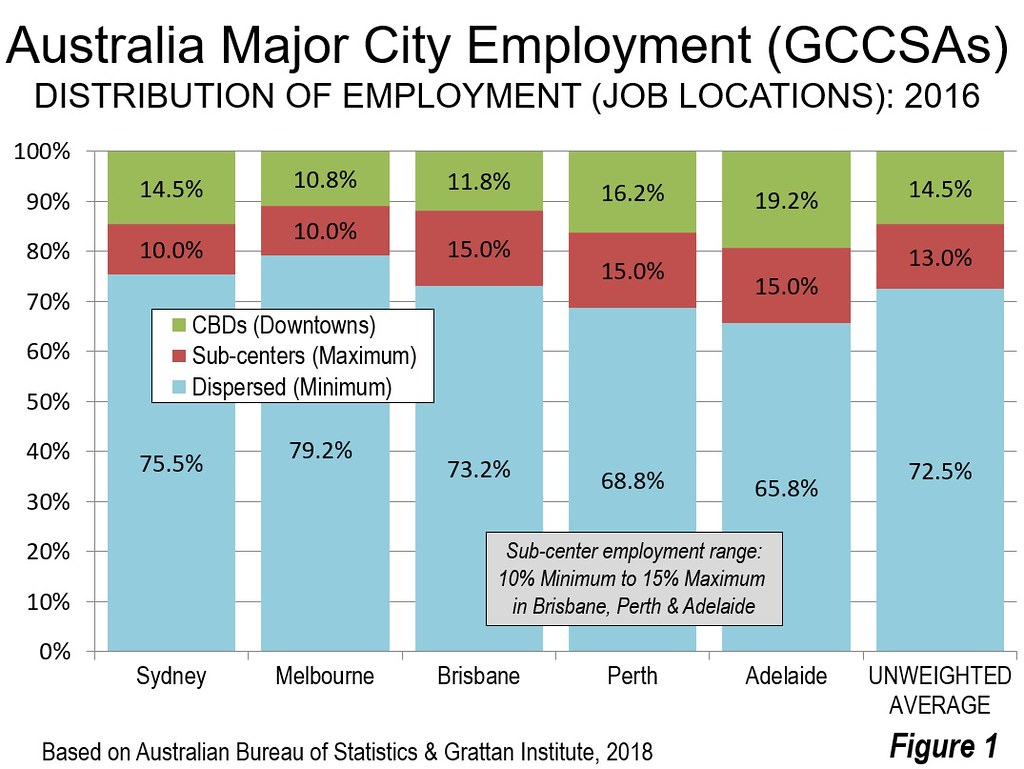
Between 55% and 60% of Australia’s urban population is concentrated in these five largest urban centers (Figure 2). By world standards, this is very high (Figure 3). Japan and South Korea have a larger share of their populations in urban areas with more than 1,000,000 residents, at 60% and more. The United States and Canada follow 8 to 13 percentage points behind. Australia’s cross-Tasman neighbor, New Zealand is far below, at 32% (though it has only one urban area of this size). Larger European Union nations and soon the separated United Kingdom have somewhat smaller number percentages of their population in these largest urban areas. By comparison, approximately 25% of the world population lives in urban areas with more than 1,000,000 population.
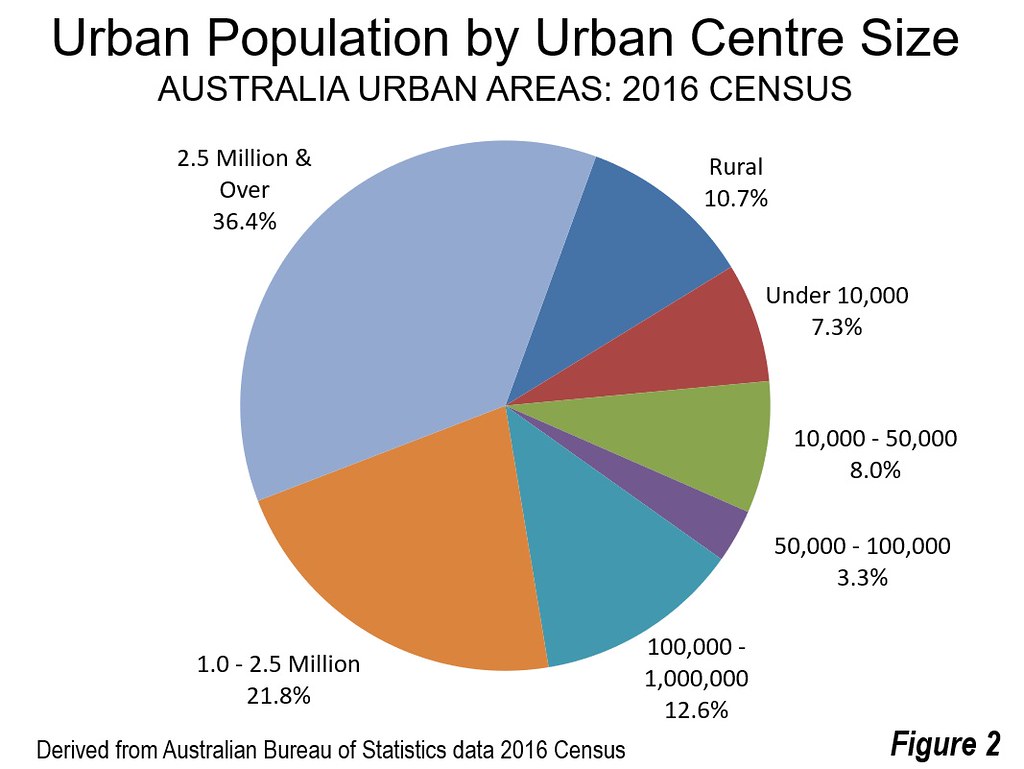

Other Urban Centres
Unlike the United States, Australia has few urban centers with between 100,000 and 1,000,000 population. Only one, the Gold Coast-Tweed Heads (Queensland-New South Wales [Figures 25-27]), has more than 500,000 residents. The Gold Coast is Australia’s principal resort and retirement area and is nearly contiguous with Brisbane, only 80 kilometers 50 miles) to the northwest. The Sunshine Coast, the second largest resort and retirement area, is about 100 kilometers (60 miles) northeast of Brisbane. The Sunshine Coast is the 11th largest urban centre.
The nation’s capital, Canberra (Australian Capital Territory-New South Wales [Figures 28-31]) has over 400,000 residents, while only three others have more than 250,000 population, each an exurb of Sydney. Central Coast is in the Sydney metropolitan area (Greater Capital City Statistical Area), while Newcastle and Wollongong are in adjacent metropolitan areas (Significant Urban Areas). Others of the largest urban centres are in relatively close proximity to the largest urban areas, such as Geelong (Figure 36), Ballarat and Bengido, which are from 75 to 150 kilometers of Melbourne, and Toowoomba, approximately 75 kilometers from Brisbane.
There are also photographs below of 12th ranked Hobart, capital of Tasmania (Figures 32-34), 16th ranked Darwin, capital of the Northern Territory (Figure 35), 23rd ranked Launceston (Tasmania [Figure 36]) and 51st ranked Alice Springs in the center of the nation (Figure 37), with nearby Ayers Rock (Uluru) and the Olgas, in the Northern Territory (Figure 38-41).
Population densities fall sharply in the smaller categories of urban centres (Figure 4).

Urban Centres: National Summary
Overall, there were approximately 20.9 million urban residents in the nearly 700 urban centres, which covered 23,100 square kilometers (8,900 square miles). This is 0.29% of Australia’s land area, one of the lowest figures in the world, according to a tabulation published a decade ago. The overall urban density of 903 per square kilometer (2,340 per square mile) is somewhat low, even by high-income nation standards (Figure 5 from Demographia World Urban Areas 2018, Page 21).
Annual updates of urban population and density will be contained in Demographia World Urban Areas, and the next official Australian Bureau of Statistics will be reported in in the 2021 census.




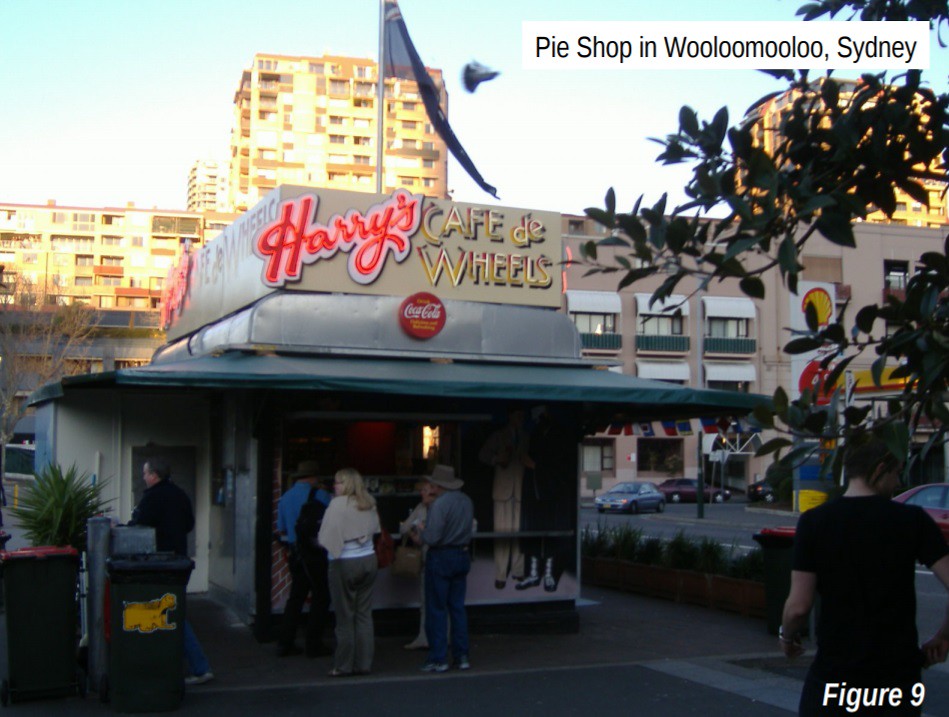









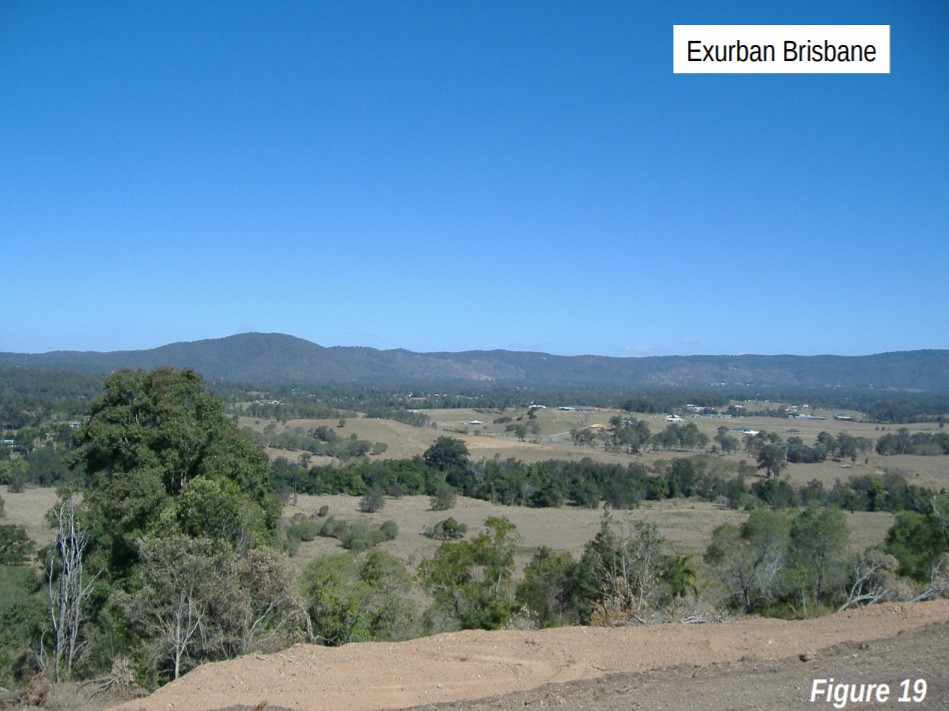

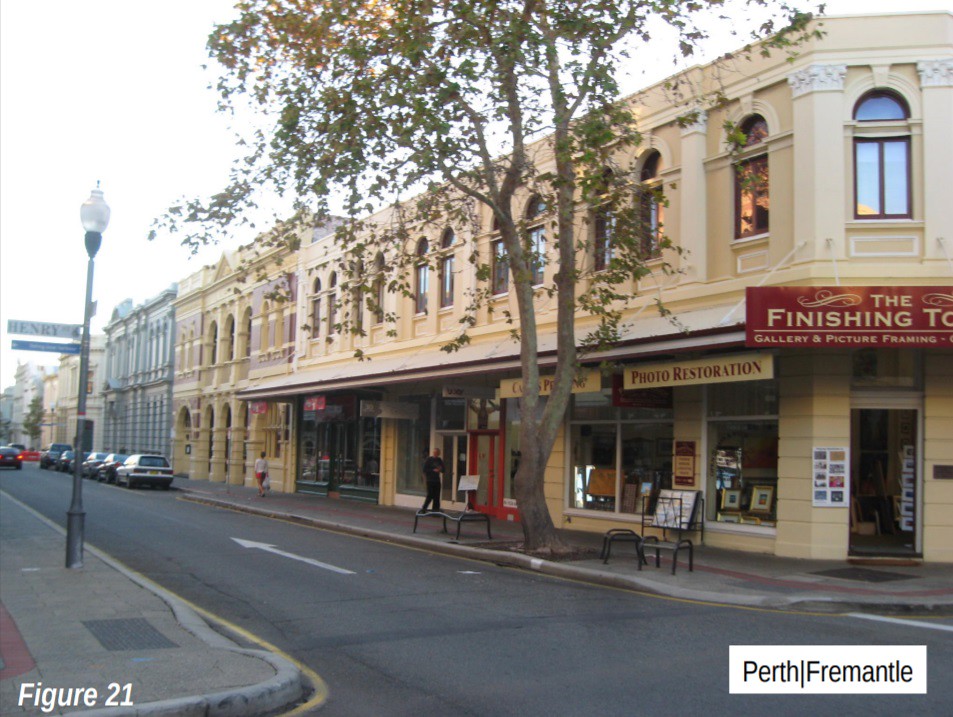







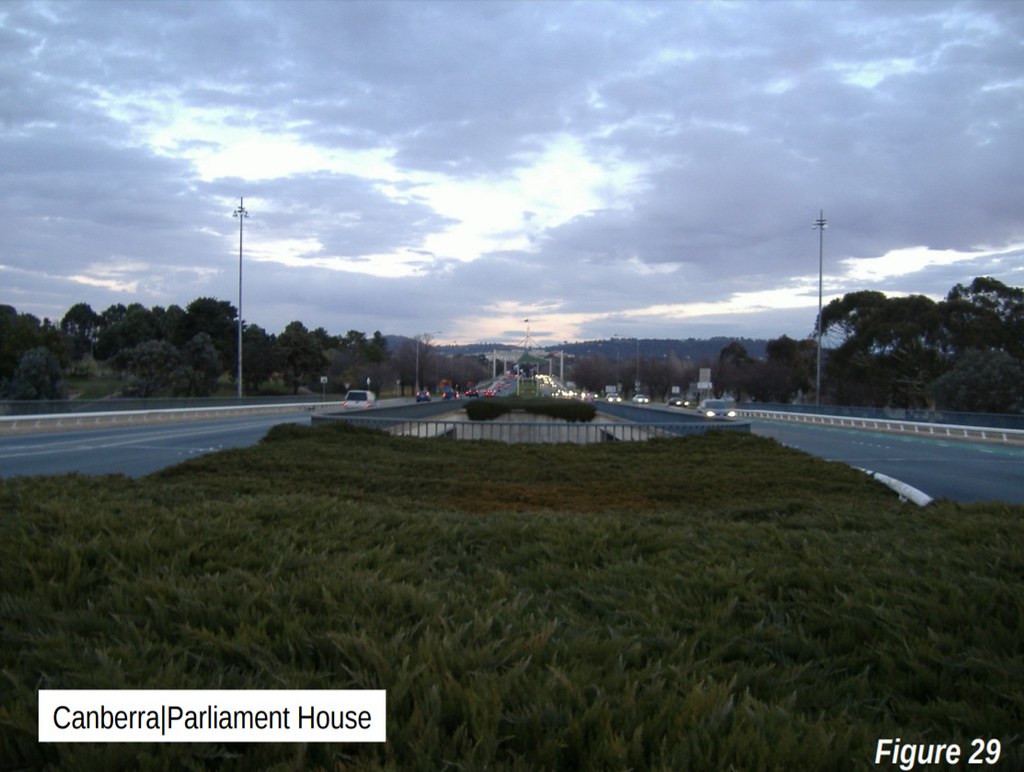










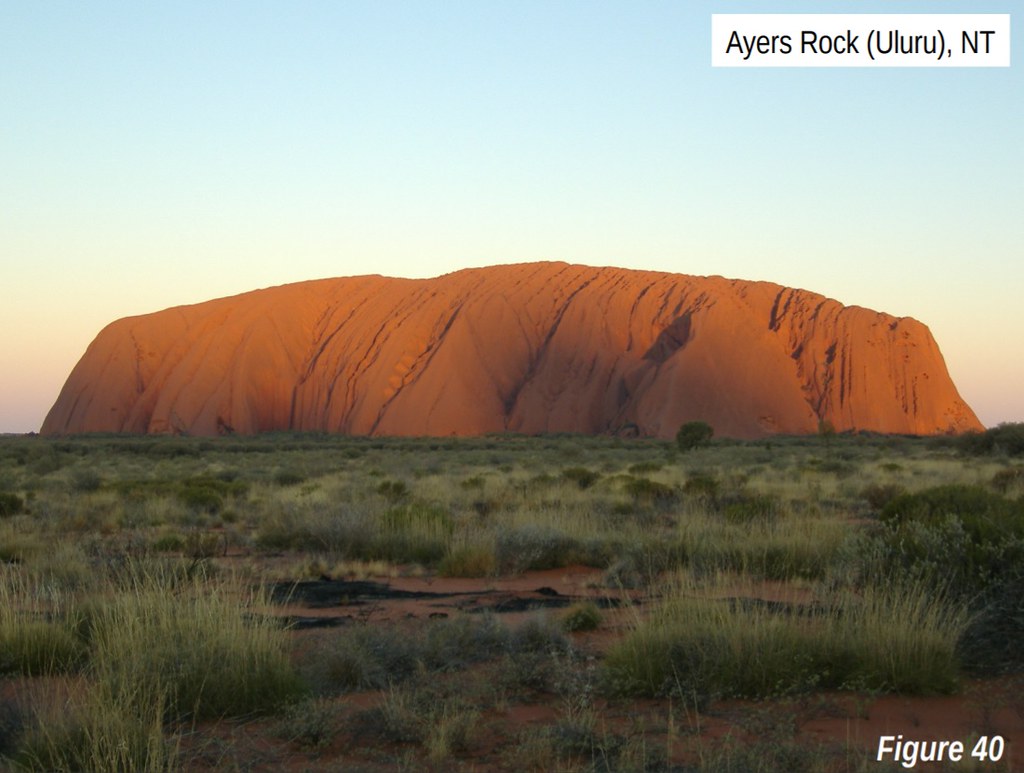


Wendell Cox is principal of Demographia, an international public policy and demographics firm. He is a Senior Fellow of the Center for Opportunity Urbanism (US), Senior Fellow for Housing Affordability and Municipal Policy for the Frontier Centre for Public Policy (Canada), and a member of the Board of Advisors of the Center for Demographics and Policy at Chapman University (California). He is co-author of the "Demographia International Housing Affordability Survey" and author of "Demographia World Urban Areas" and "War on the Dream: How Anti-Sprawl Policy Threatens the Quality of Life." He was appointed to three terms on the Los Angeles County Transportation Commission, where he served with the leading city and county leadership as the only non-elected member. He served as a visiting professor at the Conservatoire National des Arts et Metiers, a national university in Paris.
Photo: Sydney Opera House (by author)












